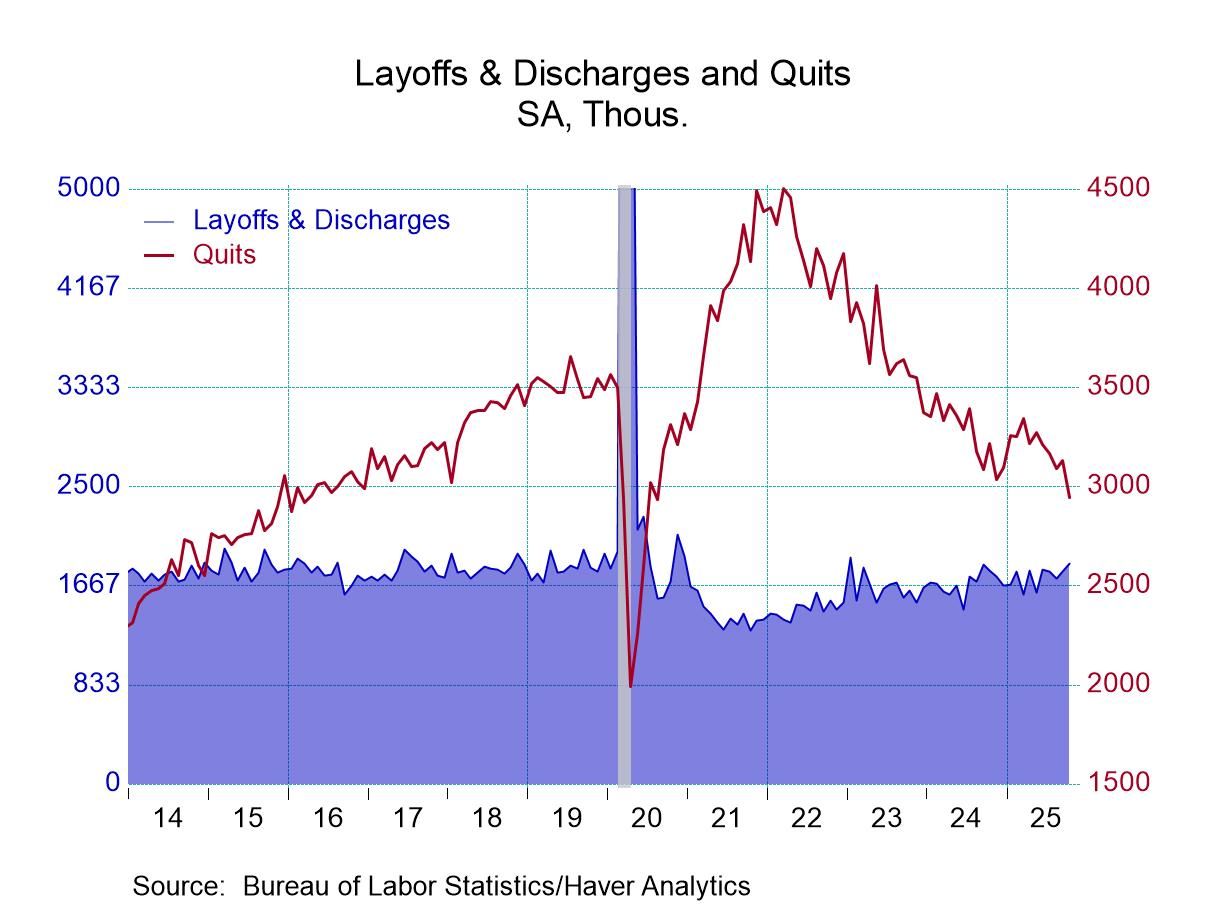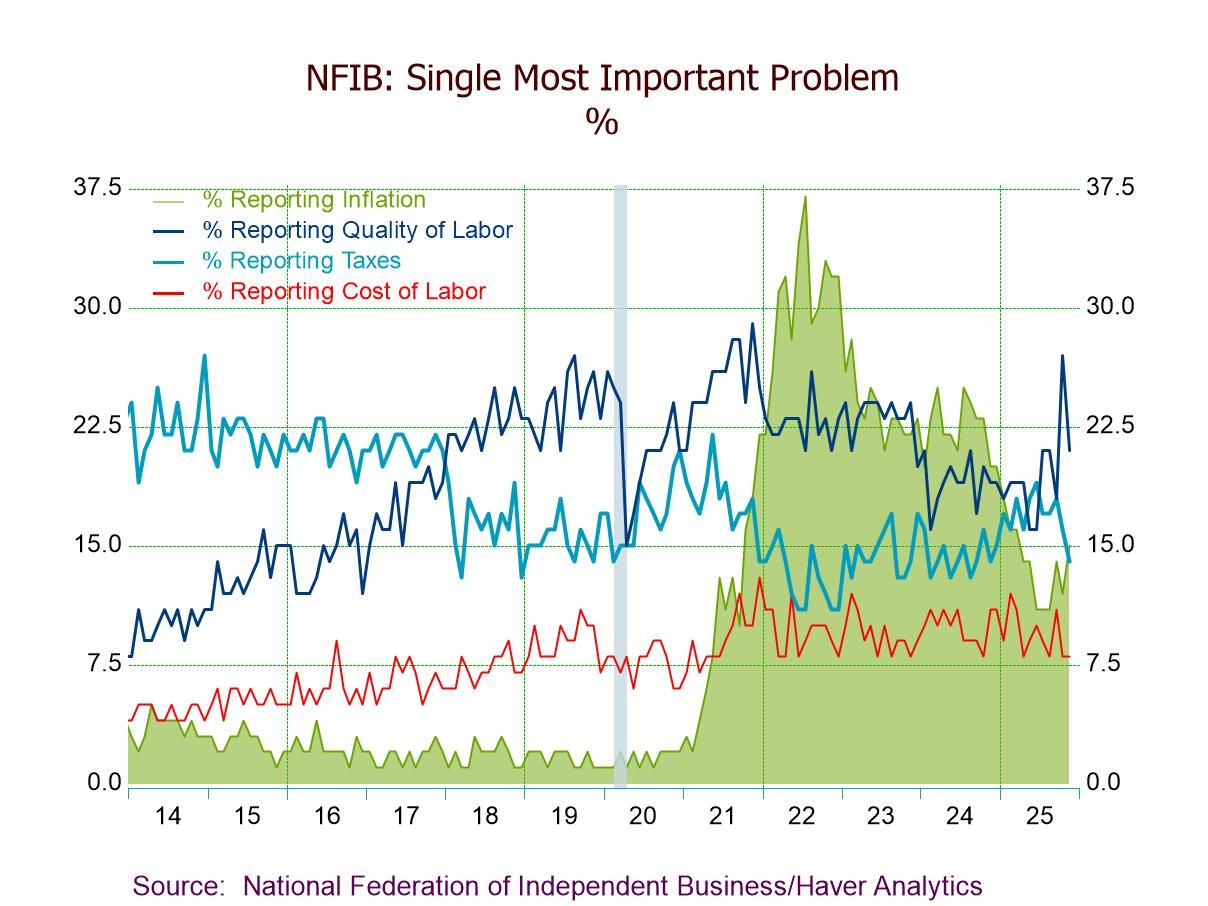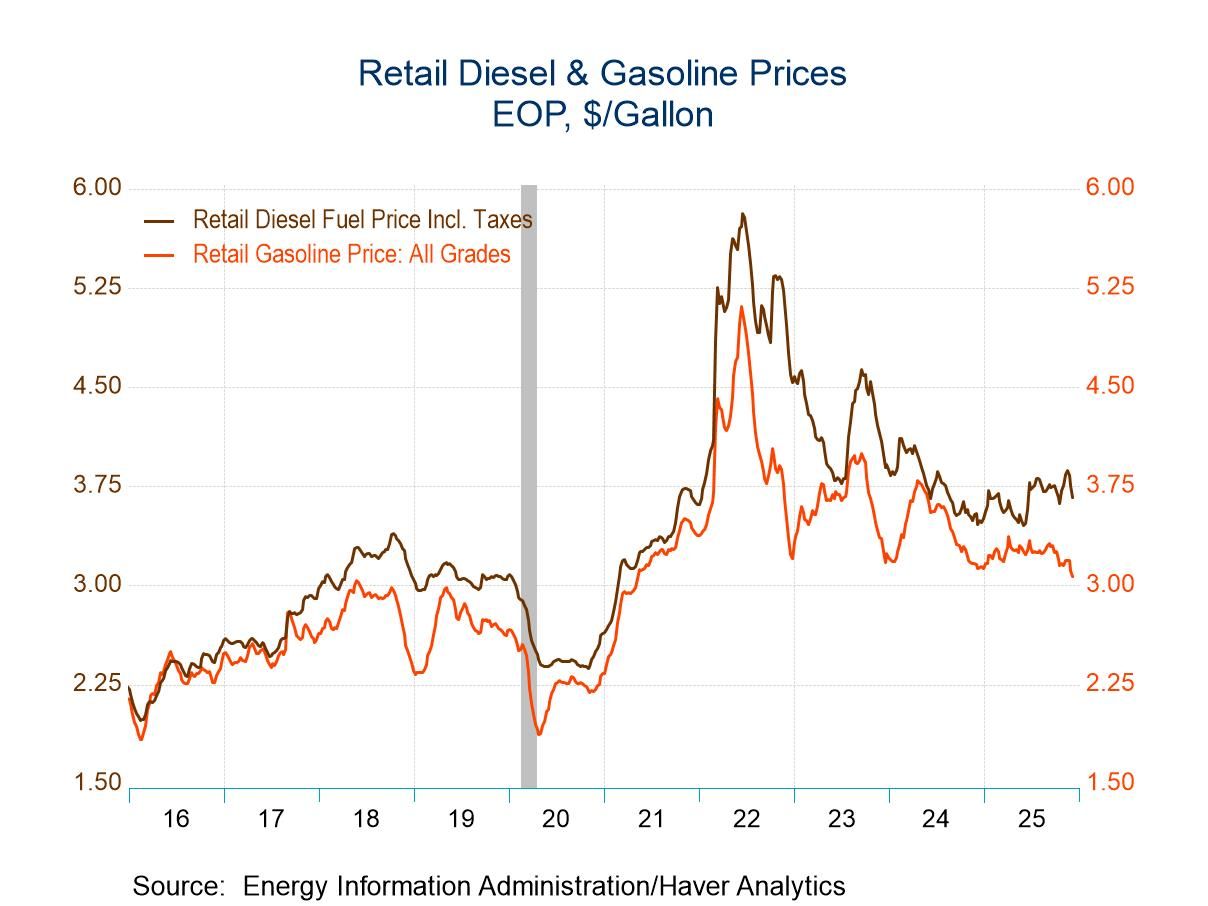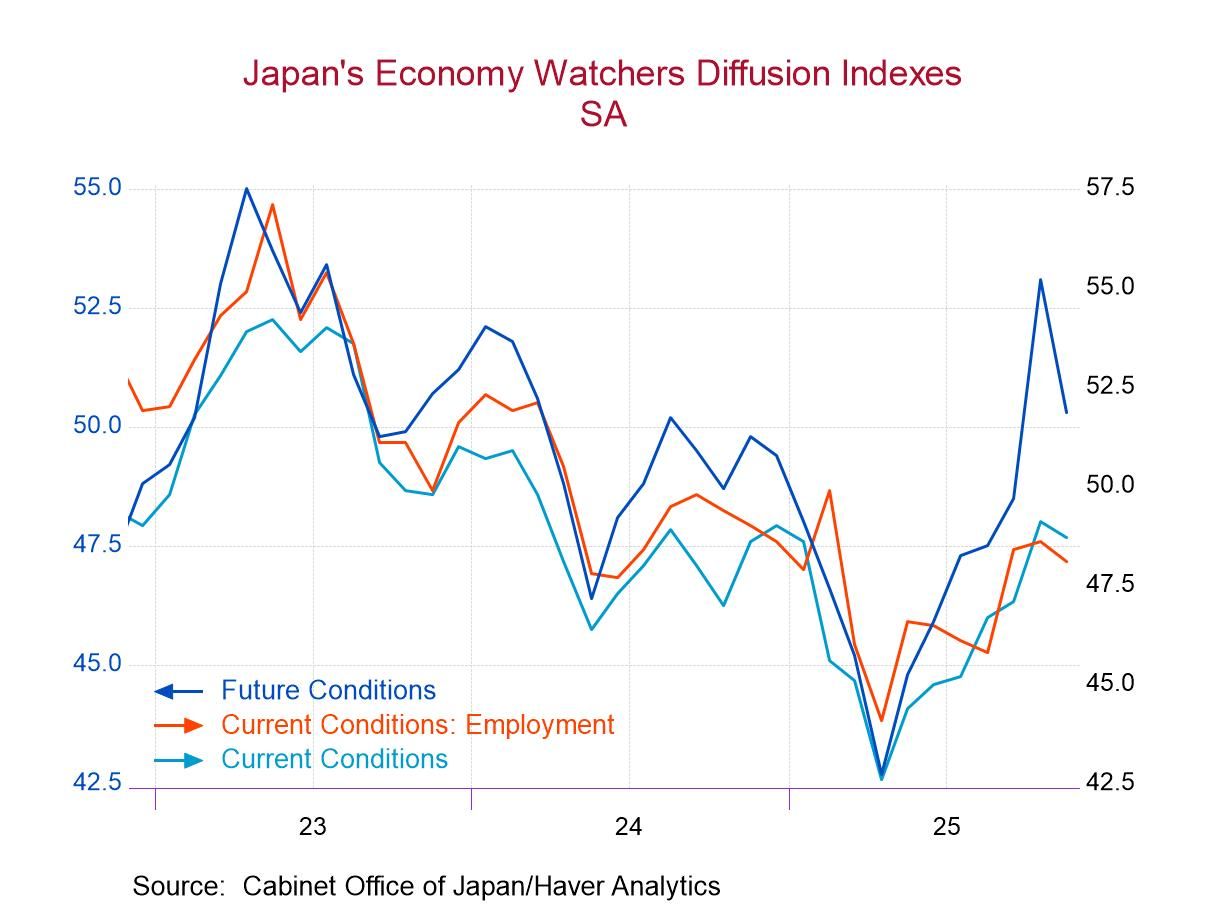 Global| Mar 04 2005
Global| Mar 04 2005Inflation Accelerates in Argentina, Remains Low in Chile
Summary
Prices are picking up in Argentina but remain quiescent in neighboring Chile, according to broad inflation gauges published today for February. Argentina's CPI rose 0.8% in the month, following increases of 1.4% in each December and [...]
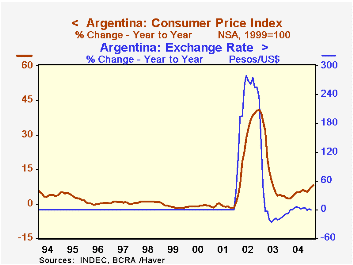
Prices are picking up in Argentina but remain quiescent in neighboring Chile, according to broad inflation gauges published today for February. Argentina's CPI rose 0.8% in the month, following increases of 1.4% in each December and January. The year-on-year rate reached 8.1%, the highest since June 2003. All of the broad categories of prices are contributing to the renewed uptrend: food, clothing, and, in particular, housing. Thus, higher food and/or energy costs are not the culprits, nor is the currency, which has stabilized after it was floated in 2002. Moreover, the central bank is doing its part, as it is constraining the growth of its monetary base.
Wholesale prices continue to rise, although they are not accelerating. But increases during much of 2004, particularly in imported products, can certainly be cited as pushing on consumer prices. No doubt energy prices are playing some part here, and other items as well.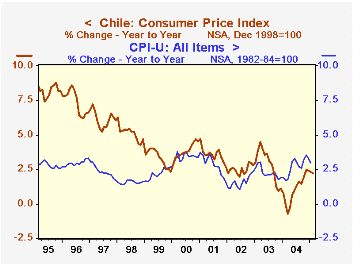
Almost the opposite situation exists in Chile, where there is only very modest inflation. In February, the total CPI was flat with January's and the ex-food-and-energy core subset fell 0.2%. Remarkably, both of these gauges are below the comparable measures for the US, as seen in the second graph.
However, inflation is somewhat firmer than its low early last year, when even the 12-month change was briefly below zero. As in Argentina, this upshift is evident in several price categories; however, in several, such as clothing, the move is from notable deflation back more toward price stability.
Beyond that, there is little basis for comparison of the two countries' inflation conditions. Argentina faces re-accelerating inflation in spite of a stable currency. Chile is incurring quite limited inflation, even as its currency value has cycled up and down and up over the last two years. Monetary growth there is also rapid and accelerating. Its wholesale prices, noted in the table below, have risen markedly over the last year, but that may well be related to the recent surge in Chile's chief export item, copper, as well as to the energy sector.
| Latin America | Monthly Rates 12-Month Changes|||||||
|---|---|---|---|---|---|---|---|
| Feb 2005 | Jan 2005 | Dec 2004 | Feb 2005 | 2004 | 2003 | 2002 | |
| Argentina CPI | 0.8 | 1.4 | 1.4 | 8.1 | 6.1 | 3.7 | 41.0 |
| WPI | 1.0 | -1.0 | 0.9 | 6.8 | 7.9 | 2.0 | 118.0 |
| Memo: Pesos/US$ | 2.9179 | 2.9448 | 2.9708 | 2.9191 | 2.9403 | 2.9472 | 3.1389 |
| Chile: CPI | 0.0 | -0.1 | 0.1 | 2.2 | 2.4 | 1.1 | 2.8 |
| ex Food & Energy "Core" | -0.2 | 0.0 | 0.4 | 1.7 | 1.8 | 1.6 | 1.8 |
| WPI | -0.2 | 0.4 | -1.4 | 8.7 | 7.8 | -1.0 | 10.4 |
Carol Stone, CBE
AuthorMore in Author Profile »Carol Stone, CBE came to Haver Analytics in 2003 following more than 35 years as a financial market economist at major Wall Street financial institutions, most especially Merrill Lynch and Nomura Securities. She had broad experience in analysis and forecasting of flow-of-funds accounts, the federal budget and Federal Reserve operations. At Nomura Securities, among other duties, she developed various indicator forecasting tools and edited a daily global publication produced in London and New York for readers in Tokyo. At Haver Analytics, Carol was a member of the Research Department, aiding database managers with research and documentation efforts, as well as posting commentary on select economic reports. In addition, she conducted Ways-of-the-World, a blog on economic issues for an Episcopal-Church-affiliated website, The Geranium Farm. During her career, Carol served as an officer of the Money Marketeers and the Downtown Economists Club. She had a PhD from NYU's Stern School of Business. She lived in Brooklyn, New York, and had a weekend home on Long Island.


